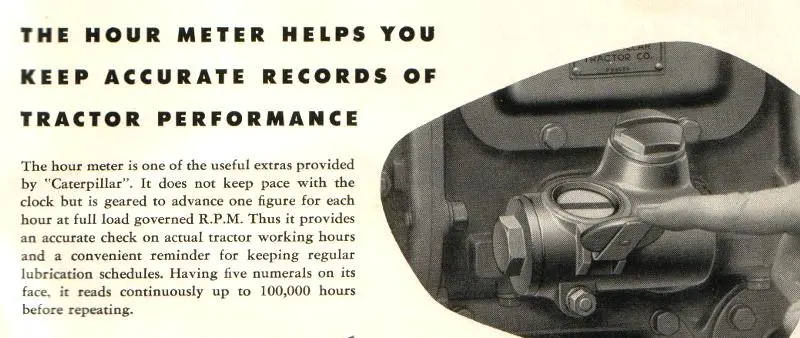OzCat - There are no tenths measurements on the old Caterpillar Service Meters .. as the hour meter is more correctly known.
They read only one number for every approximate hour worked, calculated at full load engine speed.
Because engines are worked at different speeds under different operators and different loadings (job conditions), there can be up to 10%-15% difference between what the hour meter reads, and actual hours worked.
In the early 1960's Cat altered the gearing in many hour meters to more closely reflect actual hours worked.
The original aim of the hour meter was not to give an accurate indication of hours worked, but to advise when service was due.
Thus, it is more often termed a "Service Meter" by Caterpillar in older books. In later years, Cat referred to it more frequently, as an "hour meter".
The only hour meters that read in tenths are the electric-powered models, and they always have a different colour tenths number, to differentiate between the hour numbers and the tenth numbers.
There are five numbers on the 1956 D2 service meter .. it reads up to 100,000 hrs (or 99,999 before clicking over to zero again).
If your tractor has done 4028 hrs, the meter will read 04028.


